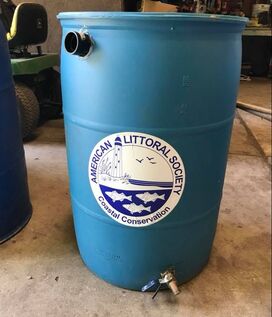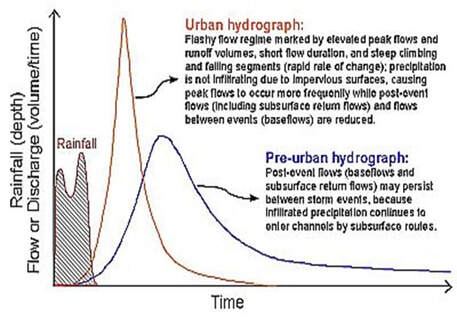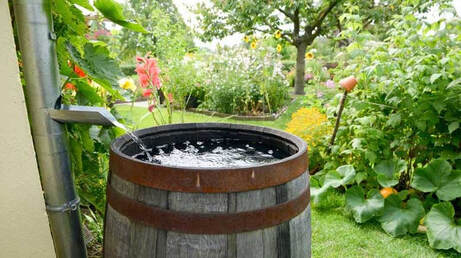 With spring well underway and many people having extra time on their hands this year to do some backyard gardening, this is the perfect opportunity to talk about a staple in the environmentalist’s home toolbox: the rain barrel. In a nutshell, rain barrels capture the stormwater that falls on your roof by hooking into your gutter's downspout. This has two main benefits, both of which are connected to each other - reducing the amount of water going into streams and helping you cut back on water consumption. Most rain barrels can hold about 55 gallons of water. That's water that often would have otherwise flowed down your driveway and into a stormdrain or, potentially, into your basement. (If set up properly, a rain barrel can be used to keep water away from your foundation by attaching a hose that leads away from the house to the overflow hole.) The storm sewer system will carry the runoff to a nearby freshwater stream, which will dump it out into a bay or the ocean. Because of all of the impervious surfaces humans have built over the years, including the roofs of buildings, the hydrology of streams has changed dramatically.  In a natural area with mostly permeable surfaces, much of the rain water will flow into the aquifer, and from there only slowly release into local waterways. But in an area with a lot of impervious surfaces, such as roofs, roads and parking lots, much of the water flows into the stream all at once, in a kind of flash flooding event. This tends to scour away habitat and reduces baseflow during times when it hasn't recently rained, as well as blocking the recharge of the aquifer. Stormwater runoff can also pick up various forms of non-point source pollution along the way, including things like fertilizer or oil from the road. This also has an impact on estuaries, which rely upon regular and clean inflows of freshwater. By capturing at least some of the rain that falls on your roof, using a rain barrel or another kind of green stormwater device, you are helping to prevent this negative effect.  The other positive impact of rain barrels is that you can use the captured water for all sorts of outdoor uses, most commonly watering the garden, which you normally would have had to use the hose for - which is water that was extracted from the aquifer. So a rain barrel has the double benefit of helping to prevent stormwater runoff and helping to conserve water in the aquifer. Rain water that would have normally run off into the stormdrain is instead put to a productive use in your garden. A rain barrel can save you 1,400 gallons from April to October! If you are interested in getting your own rain barrel,the Littoral Society and many of our partners periodically host make-your-own workshops. So keep an eye on on our website and social media for information on upcoming events. Or, if you want to make your own, check out the video below for a little DIY. Follow this time guide if you want to quickly access specific parts of the video - Supplies: 0:10, Inflow: 1:45, Faucet Placement: 2:23, Overflow Placement: 2:48, Spigot Install: 3:14, Overflow Install 4:23, Finishing Seals: 4:45
Kent
5/8/2020 10:08:20 am
Which are the best downspout diverters? I have a barrel but have not installed a diverter. There are so many but determining the best one is a challenge. The rain barrel is a brilliant idea for those who have limited space around their homes. We have a "rain water harvesting system" that is installed in our house. We in India thrive on seasonal rains. So this is an ingenious idea that allows water to be collected in underground sumps after they go through a natural filtration system. The RWH also significantly increases the ground water level. Try it! Comments are closed.
|
Archives
July 2024
Categories
All
|

